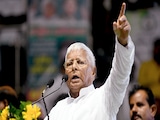Prime Minister Modi will inaugurate the Chenab Bridge, the world's highest railway bridge, in Jammu and Kashmir, boosting tourism after a recent terror attack. The bridge, part of a major rail project, aims to enhance connectivity and support local economy.
Three days from now, Prime Minister Narendra Modi will travel to Jammu and Kashmir to inaugurate what is nothing short of an engineering marvel. The inauguration of the Chenab bridge, the world's highest railway bridge, will be followed by the opening of the Katra-Srinagar Vande Bharat train service, likely to be a game-changer for tourism in Kashmir.
This is especially significant against the backdrop of the Pahalgam terror attack, which left 26 innocents dead and disrupted what was turning out to be a great tourist season. Kashmir is now eager to host tourists; this railway push may be just what it needs.
The Chenab Rail Bridge
The rail bridge is part of the Udhampur-Srinagar-Baramulla rail link project and the government has said it is arguably "the biggest civil-engineering challenge faced by any railway project in India in recent history". Approved back in 2003, the bridge has taken over two decades to complete.
Standing 359 metres above the river bed level, this is the highest railway bridge in the world. For perspective, the bridge is 35 metres higher than the Eiffel Tower in Paris and nearly five times the height of Qutub Minar. A whopping 28,660 megatonne -- 2,86,60,000 kg -- of steel suitable for use in temperatures ranging from -10 degrees Celsius to 40 degrees Celsius has been used to build the bridge. The 1.31-km bridge has been built at a cost of 1,486 crore.
The Challenges - And The Response
Building the Chenab bridge was a massive engineering challenge. The area's topography, climate and remote location were major obstacles. The Himalayan region is considered to be a tall task for engineering projects and transporting manpower to the site is a big challenge in itself. Also, the bridge needed to be strong enough to support railway movement and withstand bad weather. Decades of research, consultation and work have now brought this seemingly impossible task to reality. The bridge is designed to withstand high wind speeds up to 266 km/hour and earthquakes of the highest intensity. The bridge is designed in such a way that even if a pier supporting the structure gets damaged, the bridge will continue to be operational and trains can pass through at a low speed.
India's Most Challenging Rail Project
The Chenab bridge is part of the Udhampur-Srinagar-Baramulla Rail Link, a 272-km mega project carved through some of the most geologically complex terrain on Earth. The government has invested over Rs 42,000 crore in this project that is not just an engineering wonder, but a strategic asset. According to government documents accessed by NDTV, over 90 per cent of this route built on 943 bridges and 36 major tunnels, including T-50, India's longest railway tunnel stretching 12.77 km.
Besides boosting tourism, this project will ensure year-round transport of goods, including essential healthcare supplies, to the Valley that was often cut off during its punishing winters. It is also a boon for traders in the Valley, including its apple growers, who will be able to send their supplies to Delhi within a day.
Centre's Big Focus
The railway link to Kashmir has been a priority for the Narendra Modi government ever since it came to power in 2016. The idea behind the railway push was simple: development vs terrorism. Improving connectivity to the Valley, the government reasoned, will boost tourism and business, dealing a massive blow to terror. Earlier, travelling to Kashmir was a challenge was many. Air connectivity was not affordable for everyone and road networks were vulnerable to Kashmir's climate. But with the complete rollout of the Udhampur-Srinagar-Baramulla link, tourism is likely to get a massive boost in Valley. This is another feather in Railways' cap as it has, yet again, surmounted impossible odds to connect India from Kashmir to Kanyakumari.
A Cruel Disruption
In fact, Prime Minister Modi was to inaugurate the Chenab Bridge and flag off a special edition of Vande Bharat on April 19, but the visit was cancelled. Three days later, terrorists killed 25 tourists and a Kashmiri man in cold blood at Pahalgam's Baisaran Valley. The attack crossed several red lines in its brutality. Never before had tourists been targeted in Kashmir in such a way. The Pahalgam attack raised big questions on the tourism prospects in the Valley, which had been receiving record visitors for the past couple of years. Kashmiri traders took to the streets to protest against the terror attack, and hoped that this would not derail the Valley's journey to normalcy and prosperity after decades of uncertainty due to militancy.
A Bridge And A Train Of Hope
The inauguration of the Chenab bridge and the opening of fast train services to Kashmir may work wonders for Kashmir. The Railways have designed a special Vande Bharat for the Valley. This train is equipped with state-of-the-art technology to ensure safety and comfort in challenging climate conditions. It has silicone heating pads to prevent water from freezing and overheat protection sensors to ensure uninterrupted supply even at sub-zero temperatures.
Coming less than two months after the terror attack, this inauguration is also a huge message from the Centre, that it will not step back from its development objective in Kashmir, come what may. For Kashmir, this bridge and the trains that will pass through will bring tourists, supplies -- and hope.















